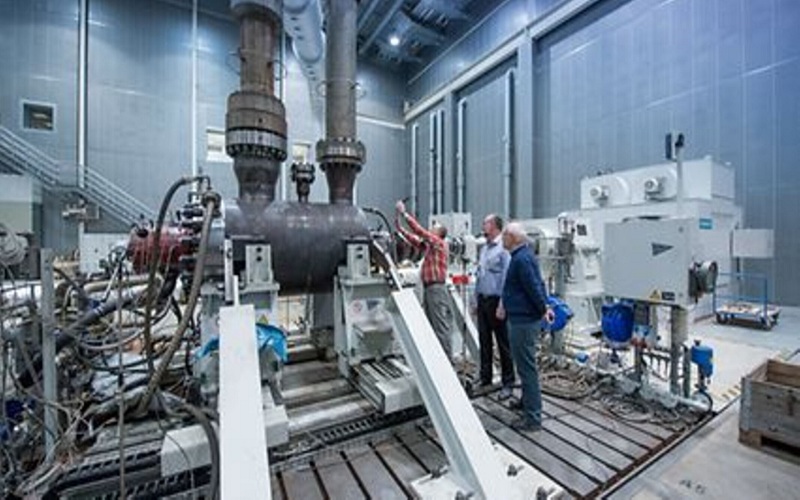Over the last several decades, the pipe-testing instrument manufacturing scene has grown remarkably worldwide. Reliable and effective pipe testing equipment is becoming more and more necessary as the need for high-quality pipes in a variety of industries including construction, water distribution, and oil and gas keeps growing. In this study, they examine the dynamics of the pipe testing instruments manufacturing industry to identify the main participants and the elements influencing their supremacy in this cutthroat market.
The Manufacturing Evolution of Pipe Testing Instruments
Manufacturing of pipe testing machine has a long history that is connected with the development of industrial processes and technology. The industry has moved along a route of invention and improvement, from crude automated systems to advanced testing procedures. Many times, the range and precision of early pipe testing equipment were constrained by their manual operation. But as digitization and automation have advanced, current pipe testing equipment has grown more accurate, effective, and adaptable.
Pipe Testing Machine Key Components
Several crucial parts make up standard pipe testing equipment, which taken together provide precise and trustworthy testing results. Among these parts are software interfaces, control systems, actuators, pressure sensors, and data-collecting units. The internal pressure applied to the pipes during testing is measured in large part by pressure sensors, and the pressure is applied by actuators with preset settings. Real-time test data monitoring and analysis made possible by the combination of sophisticated control systems and data-collecting equipment promotes well-informed decision-making and quality assurance.
Innovations in Technology Advancing Industry Leadership
Innovations in technology that improve performance, efficiency, and dependability frequently provide a competitive advantage in the production of pipe testing devices. Modern pipe testing equipment can do far more now because of developments in materials science, sensor technology, and data analytics. For example, the combination of cloud-based platforms with wireless connection allows for the remote monitoring and management of testing procedures, therefore increasing operational effectiveness and reducing downtime.
Regional Trends and Global Market Dynamics
Different geographical dynamics and market trends define the pipe testing instrument market worldwide. Growing infrastructure development and investments in important industries are driving emerging economies in Asia-Pacific and Latin America to fast growth, even while established industrialized regions continue to dominate the market share. Moreover, industry norms and regulatory systems are very important in forming market dynamics, which affects tactics for market penetration and product innovation.
Problems and Prospects in the Sector
Though many issues need to be addressed, the pipe testing instruments manufactures sector has bright future possibilities. One such obstacle is the continued necessity to adhere to changing industry standards and regulatory regulations, which calls for continuous expenditures in R and D. Furthermore endangering market integrity and customer confidence are the spread of counterfeit goods and intellectual property infringement, which emphasizes the need for strong quality assurance procedures and brand protection plans.
On the contrary, this sector has great potential for creativity and market growth. Environmental management and sustainability are becoming increasingly important, leading to environmentally friendly testing methods that reduce waste and consumption In addition, new opportunities to improve the pipe test equipment and competitive differentiation Industry technologies such as artificial intelligence, the internet of things, and big data analytics are determined by the names that come up
Process Manufacturing Emerging Trends
The aggressive environment of the sector is notably formed with the aid of the development of production strategies. Technical trends are changing the manner pipe testing gadgets are made, from conventional machining and meeting strategies to additive manufacturing and robots. Known mostly as three-D printing, additive manufacturing has come to be a disruptive force that allows for brief prototyping, personalization, and affordable manufacturing. Moreover, the aggregate of automation and robotics increases manufacturing efficiency, lowers exertion expenses, and ensures consistent product fine, placing manufacturers at the vanguard of competitiveness and innovation.
Global Sourcing Strategies and Supply Chain Dynamics
Keeping competitiveness and satisfying client needs in the international market require efficient supply chain management. For raw materials, components, and equipment, pipe testing instrument manufacturers depend on a sophisticated network of suppliers and distributors. Efficient supply chains, reduced costs, and risk mitigation from geopolitical unpredictability, exchange rate swings, and supply chain interruptions all depend on global sourcing techniques. Maintaining a competitive advantage in the market and negotiating the complexity of the global supply chain environment need cooperative relationships with suppliers, intelligent inventory management, and nimble logistics solutions.
Market Segmentation and Oriented Marketing Plans
Identification of different customer groups, comprehension of their particular requirements and preferences, and customization of marketing plans to successfully target and involve them all depend on market segmentation. Pipe test equipment manufacturers use a variety of segmentation parameters to define target markets and give marketing initiatives priority, including industry verticals, geographic areas, and client demographics. Manufacturers can connect with and connect with their target market, increase brand awareness, and produce leads by using targeted marketing techniques such as digital marketing, trade shows, and industry-specific publications. Value-added services also improve client loyalty and satisfaction, which promotes enduring relationships and repeat business. Examples of these services are technical assistance, training courses, and after-sales services.
Regulatory Compliant Quality Assurance
Pipe trying out gadget dependability, safety, and overall performance are usually dependent on regulatory compliance and quality guarantee. To hold product integrity and quality in the course of the manufacturing technique, producers use enterprise requirements and strict pleasant management systems. Strong first-rate manipulation tactics are installed to locate and attach flaws, deviations, and nonconformities as soon as possible. These tactics consist of inspection, testing, and certification. Moreover, triumphing market acceptance, improving logo reputation, and decreasing the legal and economic risks related to non-compliance want adherence to regulatory necessities and certifications, such as ISO requirements and product certifications.
Conclusion
Finally, dynamic changes fueled by market demand, regulatory requirements, and technical advancement define the worldwide production environment for pipe testing devices. While long-standing competitors are using product differentiation and market diversification to maintain their supremacy, up-and-coming competitors are using disruptive technologies and business strategies to carve out a place for themselves in this very competitive industry. The pipe-testing instrument manufacturing sector will continue to benefit from cooperation, innovation, and flexibility as the industry changes.

